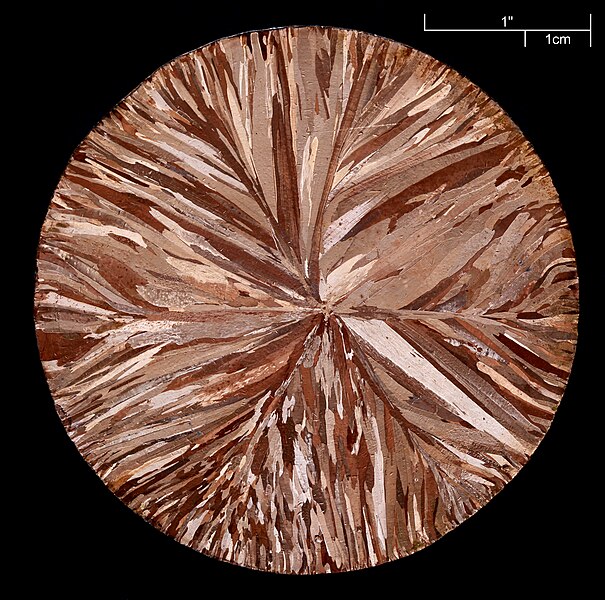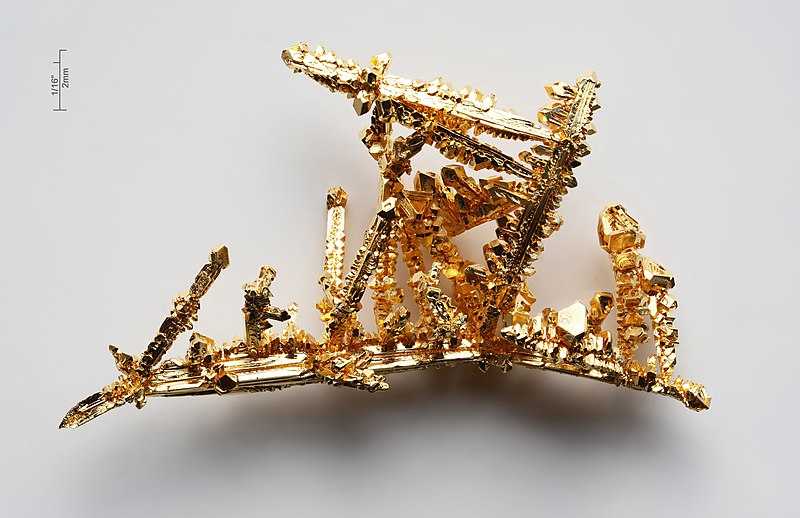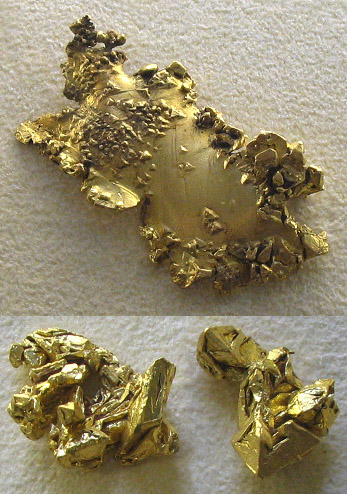Originally posted by Goldfinder
View Post
Stifflers exciter is creating a disturbance in the aether and then taps this disturbance. So how does the tap work?
After playing with the exciter and plowing through the tons of videos and associated work there is a great scarcity of anything other more variation of these circuits and no real discussion on HOW they are tapping the ZPE/aether/whatever.
After playing with the exciter and plowing through the tons of videos and associated work there is a great scarcity of anything other more variation of these circuits and no real discussion on HOW they are tapping the ZPE/aether/whatever.
So, sorry if I misunderstood your intention. However, I do think it is important to understand the principles in these resonating systems if you want to understand/discuss semiconductor only devices.
As for Stiffler: Stiffler keeps on repeating that there is something special going on with his circuit that is different from other resonating systems. Based on what you posted here about the TS transistor and what Stiffler says, I think there are certainly possibilities with semiconductors. However, I think you have to be very careful in considering what is what.
The mechanism whereby the coils in Stifflers circuit as well as in the Kapagen device tap energy from the ether has nothing to do with creating a disturbance that can be tapped, IMHO. This has to do with creating a number of dipoles which are able to tap energy from the ether and are operating at fairly high frequencies, at least into the kHz.
Having said that, I think there likely is a second principle at work, too. So, it may very well the that excess energy reportedly observed in Stiffler's circuit is 90% "just" resonating dpoles and 10% from some other mechanism. And it is that other mechanism we are after in this thread. If we want to find that, we first have to understand the 90% and then see how far we can push the other 10%.
Sebasfato and Quantumuppercut - moving in the direction that I envisioned.
Namely - that semiconductors do appear (I think they do but I am open to other suggestions) to trap energy out of the aether. AND if they do - then how can we move to a real simple energy device that converts the energy in the aether in usable electric energy.
Namely - that semiconductors do appear (I think they do but I am open to other suggestions) to trap energy out of the aether. AND if they do - then how can we move to a real simple energy device that converts the energy in the aether in usable electric energy.
Bearden explains this very nicely and the essential problem with the circuits we normally design is that they use half of the energy that is being trapped out of the ether (trough the electric fields created by the dipoles) to kill the dipoles that enable us to tap the energy from the ether.
Bottom line:
Every current flowing to any device is powered by energy trapped from the ether.
So, semiconductors are nothing special in this regard. The most important principles to understand are:
- The electric field is an energy source, emitted by charges, who trap the energy to do that from the ether.
- Don't kill the dipole that enables you to use the energy trapped from the ether by the charges that make up the dipole.
And charge is NOT fundamental - and particles are not some resonant thingy - they are vortexes in the aether. Again I say - look up Lucas and Bergman, and Paul Stowe and you would realize that. Stowe is the closest. Electrons and Protons do have charge but why do they have "charge" and what is charge?
And the aether is NOT fundamental but getting closer.
And the aether is NOT fundamental but getting closer.
http://www.energeticforum.com/renewa...tml#post108545
http://www.scene.org/~esa/merlib/magneto-dielectric.pdf
Whatever the general media is around us, call it the ether, or air or you can transmit it through the ground. Basically it just flows.
In a newspaper article I was looking through the other day I saw that the physicists now have an even bigger magnet so they can smash atoms ever harder and find more little tiny fragments to catalog and confuse themselves. What could be quirkier than a quark? (laughter)
However, particles ARE resonant thingies as well as vortexes. They are basically waves running around in circles to put it to its essence. More general, they are waves traveling in a closed loop, which can be a very complex pattern, but it's a closed loop. See this picture by Haramein:

The interesting thing with these kinds of closed loop waves is that the ether moves in some kind of elliptical-like path, which is what makes this a vortex. And that means there is a rotational component in the ether, which is what we know as the magnetic field. And then we can explain the so-called particle - wave duality principle:
- A particle is a wave running in a vortex pattern, so it has the rotational component known as the magnetic field.
- A "wave" is the just the same phenomenon NOT running in a vortex pattern, so we don't get the rotational component and therefore no magnetic component.
http://www.energeticforum.com/renewa...tml#post108640
And yes, I do know that QED and Einstein stuff should have been circular field long ago. Lets not go there. That has been beaten to death by many and it doesn't solve the problem. Telling what is wrong does not tell us what is right.
So if we can drop our various views of how this or that works lets get back to the original question regarding - Semiconductor materials.
I do appreciate all the inputs. I learn lots but it was not where I had tried to go.
So if we can drop our various views of how this or that works lets get back to the original question regarding - Semiconductor materials.
I do appreciate all the inputs. I learn lots but it was not where I had tried to go.
http://www.energeticforum.com/renewa...tml#post115135
What is interesting is to compare Tesla's bifilar wound coil from his patent with the top/bottom coils in the Kapagen device. As you can see, Tesla connected them in series, in order to get the voltage difference, while in the Kapagen device they are wound CW/CCW. So, with Tesla's coil, the voltage difference between adjacent windings is distributed across the coil, while with the Kapagen device, this increases from top (connected part) to bottom. Given that with the Kapagen device, we have different length short coils at the top and the bottom, this suggests that you probably may use this principle also at higher harmonics with the Kapagen way of winding and still get this voltage gain effect. You see, with Tesla's way of winding, you only get the situation that the magnetic field caused by the currents trough each half of the coil cancel each other out at the half wave resonance frequeny (over the whole coil), while with Kapagen's, they seem to always(?) cancel one another out, or at least at more than one higher harmonic.
So, it seems that with Kapagen's way of winding, you can create a pure (longitudinal, "pressure-like") electric oscillation across the coil windings, without creating a magnetic field....
So, it seems that with Kapagen's way of winding, you can create a pure (longitudinal, "pressure-like") electric oscillation across the coil windings, without creating a magnetic field....
And there we have a connection to what you referred to in your first post.
Space has this seething energy blazing through it. Various estimates go as high as 100 KW per cubic centimeter. The Dr. Stiffler exciters and other similar circuits tickle this standing wave field creating a disturbance in the aether and then trap the disturbance. Why not tap the seething field of energy directly? If the Lockheed free energy transistor and Dr. Moray's cryptic statement have some weight it looks to me the way to go. Not being a semiconductor expert (yes I have a number of the college courses on the material) maybe there is someone out there in lala land that could contribute.
So, if you want to go into the direction of tapping this VLF standing wave directly, then you cannot use HF oscillators / tuned circuits IMHO. However, given that these Kapagen wound coils show interesting results, you may be able to construct a device using capacitances, which could be implemented in semiconductor material. Have to think about this further.
Update: just found a very interesting article on "AETHER CONTROL via an understanding of ORTHOGONAL FIELDS": http://creatorguy.com/files/Ortho1.pdf
 I really should restrain myself but it seems like a valid question to me. It's a bit wierd to think I could be here only because of some swirling mass being manifested into some order where I am located.
I really should restrain myself but it seems like a valid question to me. It's a bit wierd to think I could be here only because of some swirling mass being manifested into some order where I am located.  I gotta get some sleep.
I gotta get some sleep.







 [/IMG]
[/IMG] 







Comment